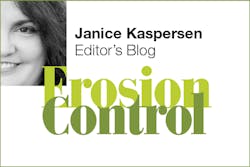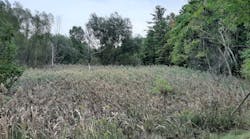
NOAA is predicting a larger-than-usual dead zone in the Chesapeake Bay this summer. The usual causes of these hypoxic areas are excess nutrients—nitrogen and phosphorus—in stormwater runoff, which lead to algae blooms that decompose and deplete oxygen levels, harming aquatic life and wreaking havoc with fisheries.
It’s not just the Chesapeake Bay; dead zones occur in many lakes and oceans, and the one in the Gulf of Mexico is, in some years, the size of a small state or two. Urban runoff is partially to blame for the nutrients, but the bigger share of the blame usually goes to agriculture: erosion of cropland and fertilizer-laden runoff.
Now, researchers at Duke University have identified another significant source of nutrients: landfills. They’re not leaching nutrients directly into the water, though. More than a million seagulls feed at North American landfills—many of which are located near lakes, reservoirs, and oceans—and then, not to put too fine a point on it, poop in the waterways. Duke researchers estimate the birds are adding 240 tons of nitrogen and 39 tons of phosphorus to North American waters each year.
“The idea that gull feces can be a major water quality problem may sound comical—until you look at data from an individual lake,” says one of the study’s authors. Swiss researchers have estimated that the seagull population contributing to the problem might be even larger, somewhere on the order of 5 million birds.
A recent article in Erosion Control dealt with daily cover at landfills, in part to avoid this problem, and this article from MSW Management magazine looks at how trained hawks and falcons are used at some landfills to ward off seagulls. Just as some landfills located near airports try to discourage seagulls to avoid aircraft strike hazards, the Duke team suggest that those located near impaired waters might want to consider discouraging the gulls or, as they euphemistically put it, reducing the size of the flocks.
About the Author
Janice Kaspersen
Janice Kaspersen is the former editor of Erosion Control and Stormwater magazines.

